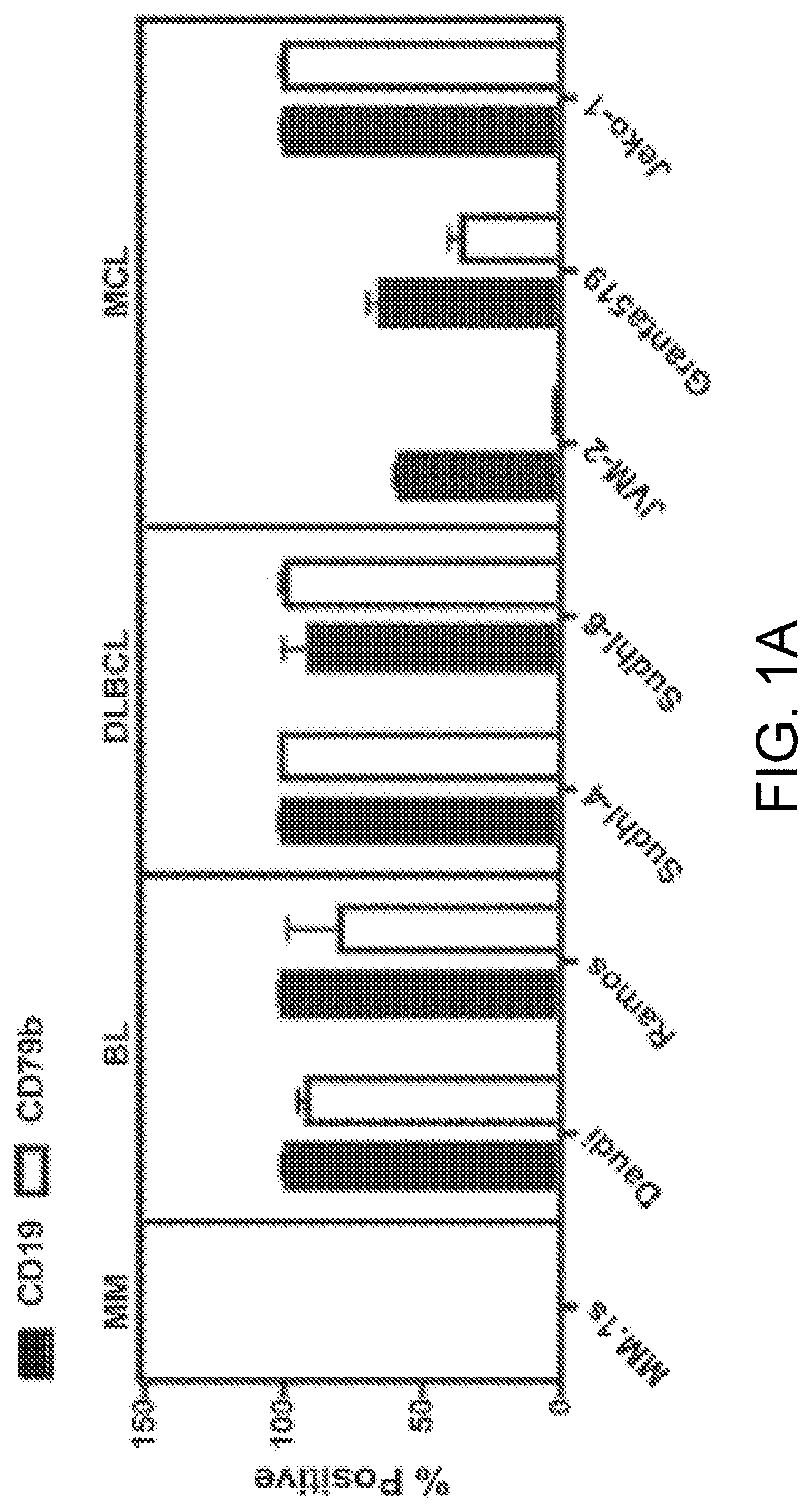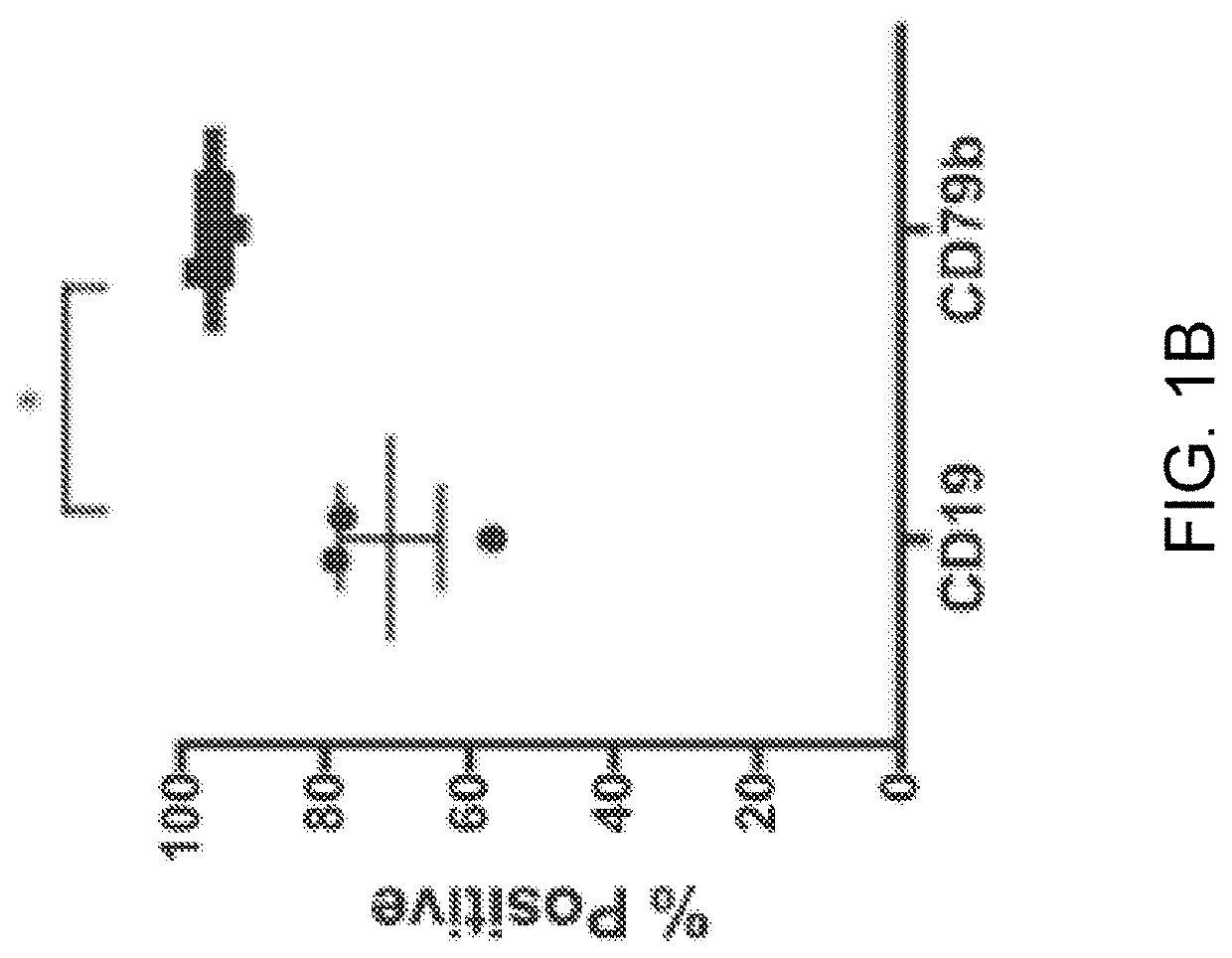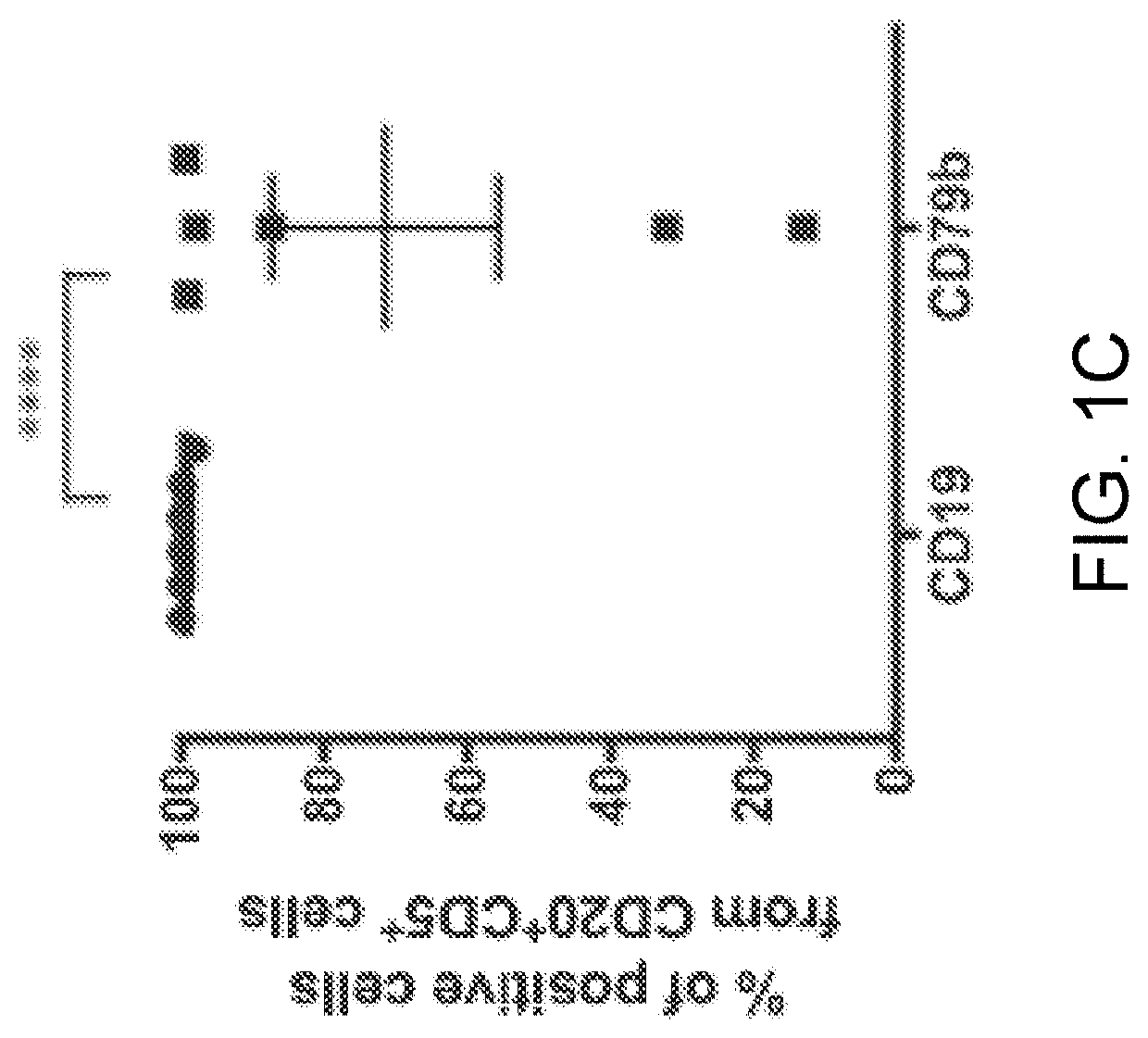Chimeric antigen receptors targeting cd79b and cd19
a technology cd79b, which is applied in the field of chimeric antigen receptors, can solve the problems of uniform poor prognosis of nhls and treatment failures due to antigen escape, and achieve the effects of reducing, reducing or alleviating at least one adverse effect, and reducing the potential effect of chromosomal integration
- Summary
- Abstract
- Description
- Claims
- Application Information
AI Technical Summary
Benefits of technology
Problems solved by technology
Method used
Image
Examples
example 1
Expressed on Human Lymphoma Subtypes and MCL Patient Cells
[0279]Expression of CD19 and CD79b on B cell tumor lines and MCL-patient-derived xenografts was evaluated by flow cytometry. CD79b and CD19 were expressed on human BL, DLBCL, and MCL, but not multiple myeloma as expected (FIG. 1 A and FIG. 2A). In addition, CD79b expression has been reported in patients diagnosed with follicular lymphoma both at presentation and relapse (Blood 2009; 114(13):2721-9). We noted a high frequency and homogeneity of CD79b-positive cells in the MCL PDX samples, to a greater degree than for CD19 (FIG. 1B). Next, we evaluated the expression of CD79b and CD19 on malignant cells in blood from six patients diagnosed with MCL (FIG. 1 C). Malignant cells were gated as CD3-CD20+CD5+B cells, and expression was analyzed by flow cytometry (FIG. 2B and FIG. 2C). All malignant cells expressed CD19, but unlike in the PDX models, the frequency CD79b-positive malignant cells appeared to be more variable.
example 2
Anti-CD79b CAR Constructs
[0280]We designed two second-generation CAR constructs directed against CD79b. Both constructs included an anti-CD79b scFv connected via a CD8 hinge and transmembrane domain to an intracellular 4-1 BB signaling domain and a CD3 zeta activation domain (FIG. 1 D). The scFv was synthesized in a light-heavy (L / H) or a heavy-light (H / L) orientation of the variable domains generating CAR79b (L / H) or CAR79b (H / L) CAR T cells. For comparison, we generated a CAR19, and used the same hinge, transmembrane, and signaling domains as in the CD79b CARs. In order to determine transduction efficiency easily, we incorporated an mCherry fluorescent protein, separated from the CARsequence by a T2A element. High transduction efficiencies of activated human T cells were routinely obtained using a third-generation, self-inactivating lentiviral vector system (FIG. 3A). We observed similar transduction efficiency across multiple donors for CAR19 compared to CAR79b (L / H) and CAR79b (...
example 3
T Cells have Potent Effector Functions In Vitro
[0281]We designed a series of in vitro experiments to test the efficacy of the anti-CD79b CAR T cells. First, the ability of CAR T cells to be activated in response to antigen was tested. The different CAR constructs were transduced into the Jurkat-NFAT reporter T cell line. After transduction, Jurkat-NFAT cells were co-cultured with the MCL cell line Jeko-1, K562 transduced to express either CD19 or CD79b, anti-CD3 / CD28 Dynabeads for positive control, or media for negative control. NFAT mediated luminescence demonstrated activation of Jurkat T cells in response to antigen-specific stimulation (FIG. 3B). We noted comparable levels of activation between CAR19 and CD79b CAR T cells in response to the CD19-positive MCL tumor cell line Jeko-1. Luminescent signal was only observed when CD79b CAR T cells were stimulated with K562−CD79b+ but not K562− CD19+, indicating that activation was antigen-specific. To evaluate the cytotoxic efficacy of...
PUM
| Property | Measurement | Unit |
|---|---|---|
| size | aaaaa | aaaaa |
| surface antigens | aaaaa | aaaaa |
| resistance | aaaaa | aaaaa |
Abstract
Description
Claims
Application Information
 Login to View More
Login to View More - R&D
- Intellectual Property
- Life Sciences
- Materials
- Tech Scout
- Unparalleled Data Quality
- Higher Quality Content
- 60% Fewer Hallucinations
Browse by: Latest US Patents, China's latest patents, Technical Efficacy Thesaurus, Application Domain, Technology Topic, Popular Technical Reports.
© 2025 PatSnap. All rights reserved.Legal|Privacy policy|Modern Slavery Act Transparency Statement|Sitemap|About US| Contact US: help@patsnap.com



